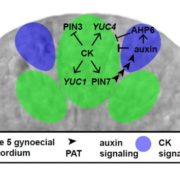
What We're Reading this week: September 29th
This week’s edition of What We’re Reading is guest edited by Nidhi Sharma. Nidhi is a researcher in Dominique Bergmann's lab at Stanford University. She graduated from The University of Texas at Austin and did post-doctoral work with Dr. Kathy Barton at Carnegie Institution of Science. Other than…

Review: Roles for IBA-derived auxin in plant development ($)
Auxin biosynthesis is a two-step process: First, tryptophan is converted to indole-3-pyruvic acid (IPyA) through the activity of the TAA1 (TRYPTOPHAN AMINOTRANSFERASE OF ARABIDOPSIS1) family of aminotransferase enzymes. IPyA is finally converted to IAA (Indole Acetic Acid) by YUCCA family of flavin…
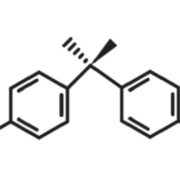
The effect of bisphenol A on growth, pigment composition and photosystem II activity of Arabidopsis thaliana
Many of the plastic consumables we have at home contain synthetic chemical BPA (Bisphenol A). In 1930, a UK scientist discovered that BPA weakly mimics the human hormone estrogen. It has also been found that tiny amount of BPA can leach out of plastic (Stanford University). Thus, there has been a heightened…
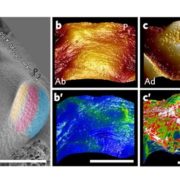
Mechanical regulation of organ asymmetry in leaves
The mystery of asymmetry is a fundamental question in biology. Plants produce asymmetric shapes in many organs e.g., primordial cells on the leaf epidermis which undergo asymmetric divisions to define stomatal stem cells that ultimately form mature stomata. This asymmetric polarity of cells is governed…

Cytokinin-auxin crosstalk in the gynoecial primordium ensures correct domain patterning
The phytohormones auxin and cytokinin (CK) work either antagonistically or synergistically to regulate several critical development pathways such as meristem formation and maintenance. Müller et al. show similar crosstalk between auxin and CK in controlling early gynoecium patterning. Using TCSn::GFP…
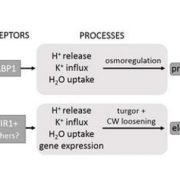
Protoplast swelling and hypocotyl growth depend on different auxin signaling pathways ($)
Auxin was the first phytohormone to be discovered and it has been found to have a role in nearly every aspect of plant growth and development. Auxin biology is multi-layered, as you will see in the following summaries. Auxin is regulated at the level of biosynthesis, different receptors, and domain segregation.…

Recognizing Plant Cell first authors: Jamie Waese
Jamie Waese, featured first author of ePlant: Visualizing and Exploring Multiple Levels of Data for Hypothesis Generation in Plant Biology
Current Position: Senior Manager, Data Visualization Lab, Department of Enterprise Advanced Analytics, TD Bank, Toronto, Canada.
Education: PhD (2017) in Data…

Recognizing Plant Cell first authors: James K. McCarthy
James K. McCarthy, featured first author of Nitrate Reductase Knockout Uncouples Nitrate Transport from Nitrate Assimilation and Drives Repartitioning of Carbon Flux in a Model Pennate Diatom
Current Position: Research Fellow, J. Craig Venter Institute, La Jolla, CA.
Education: Ph. D. Microbiology…
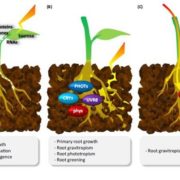
Review: Multiple routes of light signaling during root photomorphogenesis
Light response research in plants has traditionally focused on the shoot, but recent studies have revealed that roots are also light responsive. Lee et al. address the why and how of root photomorphogenesis. They review three ways that light is perceived in roots: via mobile signals from the shoot, direct…

